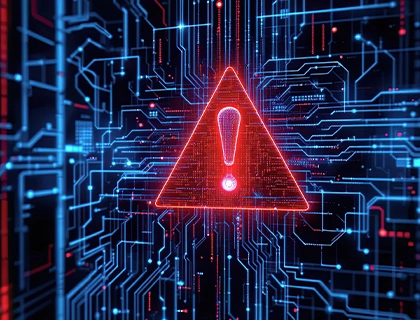
As cybercrime evolves rapidly, enterprises should replace reactive cyber defence with more robust strategies. Telcos play a crucial role in this shift by innovating advanced security solutions that shield end users from harmful threats.
7 Mins
3rd October 2024
Article
Cyber security, 5G, Network slicing, Network security
By Lin ShuFen
Head, Enterprise Mobility and IoT
Singtel Singapore
For too long, organisations have relied on a reactive approach to cyber security, only implementing defensive measures after a breach has occurred. Instead of deploying robust safeguards to detect and prevent looming attacks, cyber security becomes nothing more than a clean-up job. Businesses may learn to be more cyber resilient after an incident, but the damage has been done.
It’s not that executives are unaware of cyber threats. In a 2023 survey of 1,000 CEOs helming large organisations around the world, Accenture found that 96% of respondents recognise that robust cyber security is “a key enabler for organisational growth, stability and competitiveness.”1
And yet, one in two CEOs believe cyber security calls for incident-driven intervention instead of continuous effort and attention.
When cybercrime keeps growing increasingly insidious and complex, why are enterprises settling for outdated strategies?
Cybercriminals are aggressively targeting companies in the APAC region. A Check Point Research study found that APAC had the biggest year-on-year increase in cyber attacks in the first quarter of 2023.2
Organisations experienced 1,835 attacks per week, a 16% increase from 2022. This significantly outnumbers the global average of 1,248 weekly attacks.
Singapore, in particular, suffered a higher cyber attack rate in 2022 relative to the regional average. Data from LexisNexis Risk Solutions found that Singapore had a whopping 146% year-on-year surge in bot attacks, while human-initiated attacks increased by 93%.3
In the light of these findings, tech experts are raising the alarm on Singaporean companies’ predominantly reactive stance on cyber security.4
For instance, nine in 10 organisations maintain siloed security models, as reported in a 2022 Trellix survey of 500 cybersecurity professionals in Singapore.5 Such strategies often employ a patchwork of solutions primarily aimed at responding to threats instead of preventing them.
It’s not surprising that 35% of the respondents admit to blind spots in their security tools, since a fragmented approach often leaves critical gaps and vulnerabilities for cyber criminals to exploit.
Reactive cyber security won’t cut it when cybercrime is growing more sophisticated by the day. In their 2023 report on the Singapore Cyber Landscape, the Cyber Security Agency noted that cybercriminals may be shifting their focus towards the quality, rather than the quantity, of their attacks.6 AI has become a common enabler of attacks like social engineering and infostealer malware.7, 8, 9 With phishing emails and malware scams looking more and more authentic, attacks are trickier than ever to spot for the average end user – and on occasion, even the cyber security professional.
Humans can be the weakest link in an organisation’s cyber security strategy. As cybercrime evolves, organisations must employ proactive solutions with a strong emphasis on safeguarding the human element.
Businesses are not the only ones who need to stay alert in the face of increasingly complex and sinister cybercrime.
Telcos, too, should rise to the challenge of thwarting evolving threats. Their role in the digitalisation landscape has changed; no longer simply network providers, they drive and enable the latest advancements in tech. As risks increase with every innovation, so do the responsibilities of telcos to make them safe for users.
Telcos have unique resources that give them the potential to become trusted cyber security partners. With immense data reservoirs and an unrivalled real-time view of their infrastructure, they can use their network visibility to pinpoint anomalies and potential threats.
In innovating advanced cyber solutions, telcos can provide their customers with essential protection against intricate attacks.
Any technological advancement, no matter how exciting and transformative, can also be a new weak spot in organisations’ cyber armour.
By 2030, over four in 10 mobile connections in APAC will run on 5G. As 5G growth continues apace, adopters should rethink their cyber strategy and shift to more proactive solutions, especially as human engineering risks increase.10
Singtel’s 5G Security-as-a-Slice (SECaaS) capability is one way to narrow the gap between looming threats and fragmented cyber security measures. Singapore is among the world’s first markets to gain access to this new service, which harnesses the capabilities of 5G network slicing in offering enhanced levels of cyber security.
Most security tools for enterprises, including mobile threat defence and mobile device management, are device-based. Security applications could be bypassed when users transfer the SIM card to another mobile device.
In contrast, SECaaS stops attacks at the network level. It leverages AI and advanced machine learning to identify and block phishing links, malware, viruses and other threats, even as they are emerging and evolving. This real-time response keeps threats from reaching devices connected to the 5G network, be they mobile phones or Internet of Things (IoT) devices.
SECaaS safeguards that most vulnerable last mile: the human element. It automatically protects all users on the network without the need to install security applications. This proactive, network-based security layer can be businesses’ first line of defence against attacks.
Staying ahead of cybercrime requires joint efforts between multiple sectors. Collaboration across industries and international borders will be key to building strong, comprehensive digital safeguards.
For telcos, expanding their partnerships can pave the way for innovative and impactful cyber security solutions. SECaaS is one such solution, as the service leverages Palo Alto Networks’ expertise in advanced cyber protection, including 5G-Native security.
Opportunities may also be found in unlikely alliances, such as telcos teaming up and setting competition aside. We are already seeing this in Singapore. Earlier this year, Singtel and M1 announced a pioneering partnership to fight digital fraud through the federation of telco APIs like Number Verify and Device Location.
The more telcos can broaden collaborative avenues with vendors, stakeholders and even competitors, the more ground they can cover in advancing cyber security and protecting end users. With pooled resources and expertise, the faster and more effective they will be in gaining ground on cybercriminals.
Telcos are custodians of critical infrastructure. Ensuring the security and integrity of their networks is not just about safeguarding their own systems, but also about helping shape a safer, more resilient digital world for everyone.
Singtel’s 5G SECaaS capability adds a security layer at the network level, blocking viruses, malware and other attacks from reaching user devices. Powered by advanced machine learning and AI that can detect malicious threats even as they evolve in real time, the dynamic protection extends to all devices on the 5G network, even those without any installed device-based security applications. SECaaS also allows enterprises to perform network-level security updates and configurations, including blacklisting and whitelisting.
Leveraging the flexibility of 5G network slicing, SECaaS is a scalable and customisable security solution that can adapt to enterprises’ changing cyber security needs as they grow.
Speak to us to learn how SECaaS proactively safeguards your 5G network from data breaches and cyber attacks.
Learn more about SECaaS here.
References:

How hackers target customers through digital identities
Scams aren't a result of an individual's naivety but because hackers use sophisticated tactics to deceive. They skilfully manipulate trust, turning seemingly genuine emails into potent tools for exploitation. Discover how even a harmless email can transform a customer into the weakest link in cyber security.

Beyond silo-ed cyber security to holistic cyber defence
Security operations teams struggle with managing vast amounts of information across different systems, leading to a reactive approach with slow investigations and recovery times after incidents. In this article, Frost and Sullivan explores how Singtel's Integrated Security Operations Centre (ISOC) streamlines cyber security by centralising tools and real-time data, enhancing threat detection and response. Leveraging network expertise, Singtel provides comprehensive security across endpoints, SD-WAN, and cloud environments, ensuring proactive protection.

5G, Sustainability, Connectivity

5G, Smart cities

Healthcare, 5G, Network slicing, Smart cities

5G, Network slicing

5G, Healthcare, Network slicing, Smart cities

Healthcare, 5G, Retail, Finance, Manufacturing and logistics, Enterprise mobile protect
Get the latest digest on business and technology trends straight to your inbox.